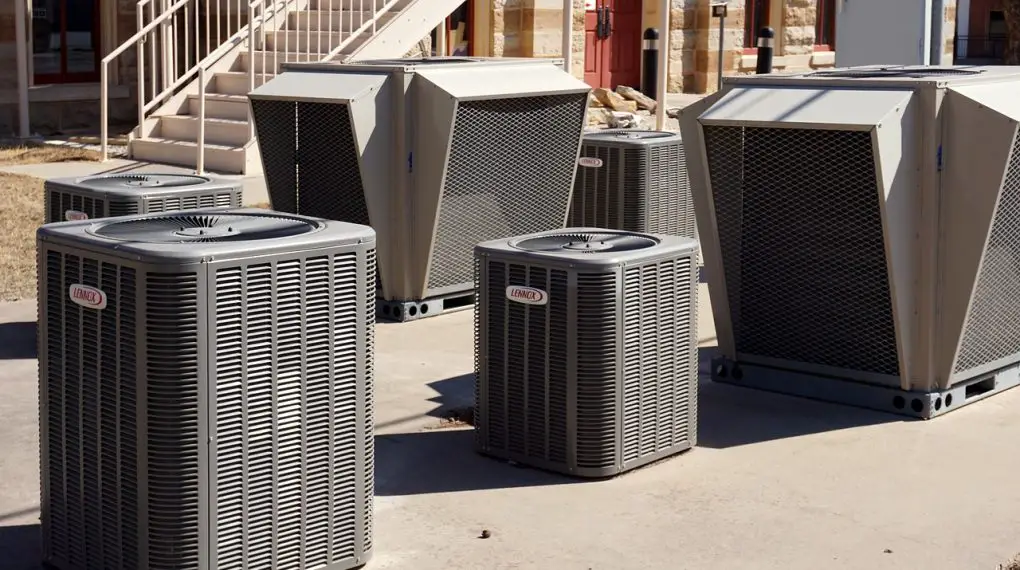SEER Rating 13 vs 16: Here’s a detailed look at these two SEER ratings, their differences, and how they can impact your life.

Table of Contents
Comparing SEER 13 and SEER 16 Air Conditioning Units
Now, it’s time for the main event: SEER rating 13 vs 16. Let’s break it down and see how these two contenders stack up against each other.
Efficiency of SEER Rating 13 vs 16
At the most basic level, a SEER 16 unit is more energy-efficient than a SEER 13 unit. To put it simply, a SEER 16 unit can produce the same amount of cooling as a SEER 13 unit while using less energy. This is equivalent to a more fuel-efficient car that can travel the same distance as a less efficient one while using less gasoline.
Translating this to real-world impacts, the efficiency difference means that a SEER 16 unit would consume less electricity to cool your home compared to a SEER 13 unit. So, just like a runner who utilizes their energy efficiently can run longer distances, a SEER 16 unit can cool your home using less power, thereby reducing your energy consumption and costs.
Cost of SEER Rating 13 vs 16 Units
Generally speaking, a higher SEER rating correlates with a higher upfront cost for the unit. Therefore, SEER 16 units typically are more expensive than SEER 13 units. However, it’s essential to consider the long-term costs as well. Because of its greater efficiency, a SEER 16 unit can save you money in the long run by reducing your energy bills.
Just as a more expensive car that gets better gas mileage can eventually pay for itself through fuel savings, the energy savings from a SEER 16 unit can make up for its higher initial price. How quickly this happens will depend on factors like your local electricity rates and how often you use your air conditioner.
Longevity and Maintenance of SEER Rating 13 vs 16 Units
When it comes to longevity and maintenance, both SEER 13 and SEER 16 units are designed to last for years with proper care. The SEER rating does not directly influence a unit’s lifespan or its maintenance requirements. Much like cars, their longevity largely depends on how well you maintain them.
Regular maintenance, such as cleaning or replacing filters and having professional tune-ups, will help ensure that either type of unit runs efficiently and lasts as long as possible. If well-maintained, both SEER 13 and SEER 16 units should serve you reliably for years to come.
Check out these other related articles…
SEER Rating for Window AC: Quick Guide
SEER Rating of Portable Air Conditioners: Easy Guide
ISEER Rating Calculation: Explained
SEER Rating Changes: Your Ultimate Guide
European Seasonal Energy Efficiency Ratio (ESEER)
SEER Rating vs Ton: Discover the Differences
SEER Rating and Humidity: Factors that Influence Efficiency
Which One to Choose: SEER 13 Rating vs 16?
Choosing between SEER 13 and SEER 16 is like standing at a crossroads. Which path do you take? Let’s explore some factors that might help you decide.
Considerations for Choosing the Right SEER Rating
When deciding between SEER 13 and SEER 16, you’ll want to consider a few things. What’s the climate like where you live? How often do you use your air conditioner? And how much are you willing to spend upfront for potential energy savings down the line? It’s like picking the right outfit for the day – you have to consider the weather, the occasion, and your budget!
Environmental Impact of SEER Rating 13 vs 16
Another thing to ponder over is the environmental impact. A SEER 16 unit is more energy-efficient than a SEER 13, which means it consumes less energy to cool your home. Less energy consumption means fewer greenhouse gas emissions. So, by choosing a SEER 16, you’re not just making a choice for yourself, but for Mother Earth too. Kinda cool, isn’t it?
Potential Savings with SEER 16
Let’s talk numbers. How much can you potentially save with a SEER 16 unit compared to a SEER 13? Well, the exact savings will depend on factors like your usage and the cost of electricity in your area. But generally, a SEER 16 unit can save you around 15-20% on your cooling costs compared to a SEER 13 unit. That’s like finding a twenty-dollar bill in your old jeans, every month!